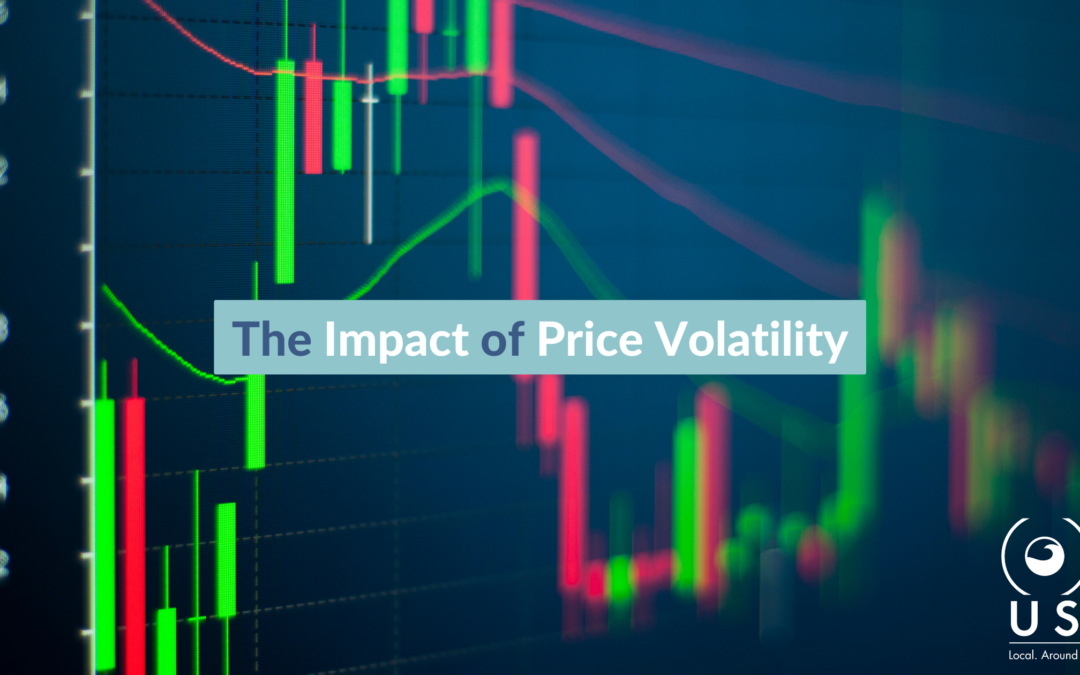
The Impact of Price Volatility
It’s been a perfect pricing storm for shipping and logistics companies. COVID-19 and subsequent rebounds, labor unrest, and supply chain disruptions have led to massive price volatility and wildly fluctuating shipping rates. For brands that rely on a steady supply chain, these pricing swings have been problematic—the trucking industry and other businesses that rely on a steady supply chain, for starters.
For the trucking industry, recent Pacific labor unrest led to slowdowns for many trucking companies, as East Coast ports struggled to keep pace with overflow from West Coast ports. The more backed-up ports became, the longer vessels waited, with less immediate cargo being loaded onto and delivered via truck.
Also impacted: shipping companies that launched amidst sky-high pricing in 2021 and 2022. With rates returning to a more comfortable mean, these teams can no longer afford to charter ships at above-average rates, even with full shipping loads.
Beyond that, many of these businesses are sitting on massive inventories they overpaid for just a year or two ago. With each charter, they’re losing money on both the charters themselves and the often-reduced rates for their existing inventory. Layer in market common market delays—with them, narrower windows surrounding holiday shopping and other peak periods—and the problem compounds even more.
Factors Impacting Shipping Rates
Labor considerations, price fluctuation, and inventory over-spends are just a piece of the volatility puzzle. Supply and demand naturally play a significant factor in shipping fees—the more in-demand a product, the more demand for freight services to move that product. As demand for space rises, so do prices. This constant push and pull between rising demand for specific goods paired with limitations on shipping capacity can impact volatility. During peak COVID-19 periods, decision-makers also needed to factor in lockdowns which disrupted cargo movement by delaying or reducing trips.
Also impacting pricing volatility:
- Bunker Adjustment Factor (BAF) is a surcharge for shipping operators that compensates for fuel price changes. Implemented by the IMO, BAF was intended to cover all fuel charges—but the immediate trickle-down impacts overall price volatility.
- Carrier costs have been consistently on the rise. Many carriers are adding charges to account for port congestion and environmental considerations. With more and more ports experiencing significant delays, carriers potentially lose out on other opportunities. These increases protect businesses should mass slowdowns happen.
- Peak season surcharges happen during the holiday season. During these peak periods, carriers raise rates along with the spike in demand. In China, Chinese New Year is a major consideration for shipping fees—demand before and after this period tends to increase significantly, with people focused on getting goods to their final destinations as quickly as possible.
- Trade agreements, strikes, wars, and other political events can cause ports to close down or even goods to become increasingly scarce in specific markets. This, then, drives demand and shipping prices up.
- Global exchange rates can also impact pricing. In weaker currency countries, imports and exports become more expensive, while stronger domestic currencies readily increase international shipping and benefit from these less-expensive rates.
The Volatility Winners: Agile Supply Chains
While many businesses struggled to keep pace—and keep profitable—during pricing swings, others found ways to accelerate their growth and profitability. These companies specifically adjusted operations to account for pricing fluctuations, making them more profitable and competitive. With agile supply chains, these organizations were better equipped to handle rapid changes without missing a beat.
The takeaway, then? Price volatility will always be an X-factor in the shipping industry. To remain operational during these ups and downs, businesses must stay agile, rapidly adjusting to shipping rates and supply chain disruptions. This is especially true for trucking companies and other businesses that rely on a steady supply chain to remain profitable.
Achieving this level of agility, though, doesn’t happen overnight. Organizations must reassess their inventory management practices to avoid overpaying for inventory during high-rate periods. New technologies and partnerships with more agile logistics providers can help companies navigate price volatility hurdles better. By being proactive and implementing these best practices now, organizations can be prepared—and remain operational—in the face of future disruptions.


